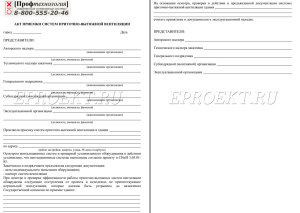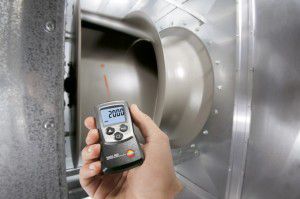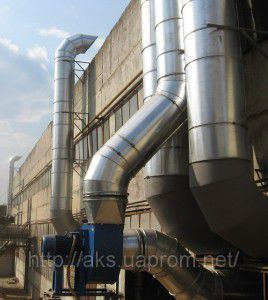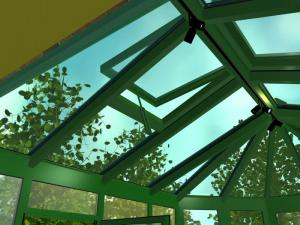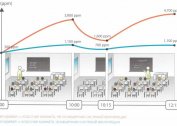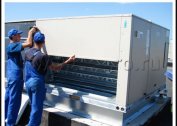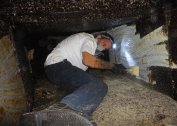Acceptance of ventilation is carried out after the completion of installation work. The list of requirements for commissioning ventilation systems is quite large. Therefore, in practice, in the process of filling out the acceptance certificate of ventilation, attention is paid only to the basic characteristics. Nevertheless, a responsible attitude to start-up tests guarantees uninterrupted operation of the equipment in the future.
Ventilation intake
Acceptance and commissioning of ventilation systems is carried out in two stages:
- tests of each ventilation unit separately;
- execution of the act of commissioning the ventilation system.
The work is carried out collectively, the act of acceptance of the ventilation system is signed by the commission, consisting of representatives of the contracting organization and the installer.
If the ventilation of a production enterprise or workshop is put into operation, the commission should include: the head of the workshop, the chief mechanic or power engineer, and a safety specialist. If the object of commissioning is very large, a specialist from the SES and a technical inspector are also invited.
All installation work is carried out in accordance with SNiP 3.05.01-85 and the project. The act of commissioning the ventilation system is necessary not only for new facilities, but also in case of reconstruction or replacement of equipment.
Before signing the acceptance certificate of the ventilation system, aerodynamic tests and verification of its performance are carried out.
All components are checked for damage or defects before testing. A program is being drawn up, according to which work will be carried out.
It is determined:
- compliance of equipment specifications with the project requirements;
- Have SNiPs and TU been taken into account during installation?
- compliance of equipment indicators with the declared manufacturer;
- leaks in the ducts;
- uniformity of heating of heating elements;
- compliance of the air throughput system declared in the project.
Aerodynamic ventilation tests
The ventilation unit approved for aerodynamic testing must be provided with the following documents:
- a project consisting of drawings, as amended (if any), as well as an explanatory note;
- protocol of approval of the project with SES and fire protection;
- user manual with the obligatory specification of the operating modes and technical readiness of the ventilation system;
- acts on hidden works (ventilation ducts in ceilings, under floors, etc.).
The commission will examine the correctness of the documentation and the conformity of the equipment during the external inspection.
Successfully conducted aerodynamic tests are the basis for signing the acceptance certificate of the supply and exhaust ventilation system. An important point is the selection of measurement points, which is carried out taking into account the cross-sectional diameters of the ventilation ducts and the distance from turns, fans.
Devices necessary for acceptance of the supply and exhaust ventilation system and signing of the act:
- combined pressure receiver;
- full pressure receiver;
- differential pressure gauges;
- anemometers;
- barometers;
- mercury thermometers;
- psychometers.
The accuracy of all instruments is regulated by the test instructions. All measurement results are processed mathematically. The main purpose of the calculations is to determine the pressure loss over the network.The act of commissioning the ventilation system is accompanied by a test report and a passport for the equipment.
If small flaws are found, the commission gives recommendations on how to eliminate them, sets a date. Sometimes, in the act of technical readiness of the ventilation system, permission is given for temporary operation for a certain period for which it is necessary to debug the work.
In some cases, the tests are carried out poorly, the acceptance certificate of the supply and exhaust ventilation system is signed in the presence of defects. After some time, the customer will have to contact independent laboratories for repeated tests, pay for them and remake the ventilation system at their own expense. Therefore, the signing of the acceptance certificate should be treated responsibly.
Ventilation equipment commissioning
Commissioning - This is a comprehensive testing of ventilation systems that determines the compliance of design values with actual ones. After it is completed, the commissioning report on ventilation and the setup passport for project costs are completed. In addition, a separate passport of an established sample is issued for each ventilation installation.
An act of commissioning of ventilation is drawn up at the end of all construction and finishing works, installation and debugging of electrical supplies, as well as individual tests of ventilation equipment with the completion of relevant acts. Prior to commissioning of ventilation works, aerodynamic leak tests are carried out, an act of commissioning of hidden work in the ventilation system is drawn up in accordance with SNiP 3.01.01-85, Appendix 6. Equipment is being run in idle.
Running in idle ventilation
Tests idling or running in detect errors in the operation of the equipment. Based on the results of running in the ventilation system, an act is filled out, and mechanisms are debugged. Idle testing ventilation systems containing valves, actuators, dampers. The duration of the tests and their conditions are indicated in the passport and technical specifications in the factory instructions. Run-in requirements are specified in the manufacturer's instructions.
At the end, an act of running in the ventilation system is drawn up.
Natural ventilation
During the acceptance of natural ventilation systems and the signing of the act, the commission inspects all air exchange structures:
- ventilation ducts;
- non-inflated lights;
- windbreak panels;
- deflectors;
- windows and opening windows, opening and closing options.
The area of window leaves is checked, their height above the floor, the presence of special platforms for opening. The possibility of supplying fresh air in winter is being studied especially carefully.
Tests with the subsequent signing of the acceptance certificate of natural ventilation are carried out at the end of the building.
The following indicators are determined:
- distribution of air masses in different sections of ventilation ducts;
- air velocity through the ducts.
Based on the results of the research, an act of commissioning the ventilation system is drawn up. A video tells about the work of natural ventilation in residential buildings.
